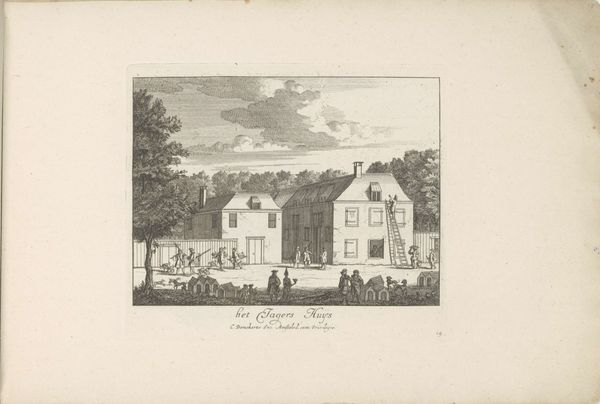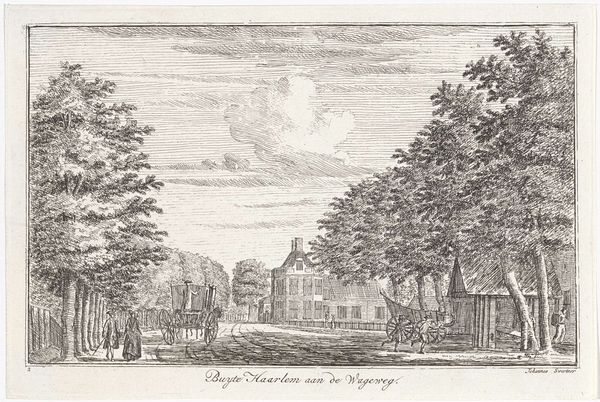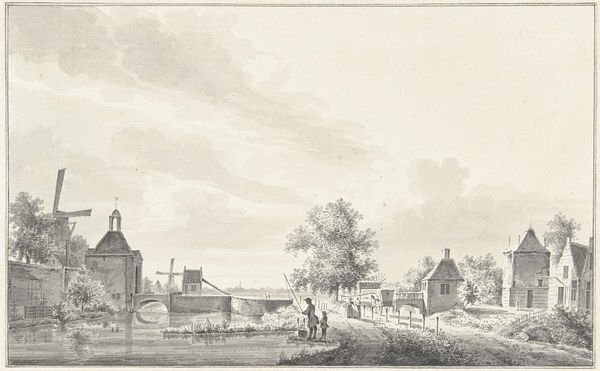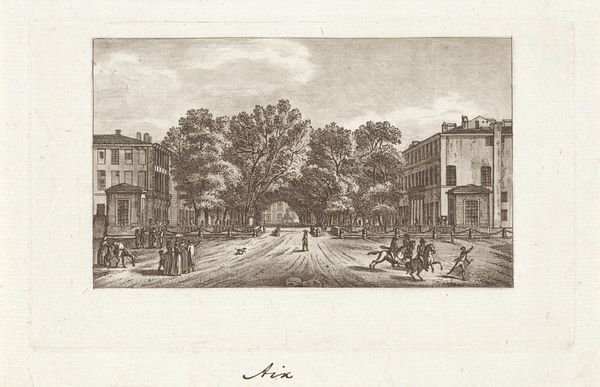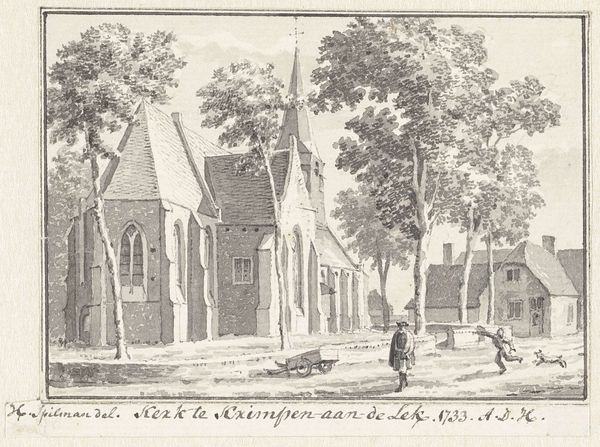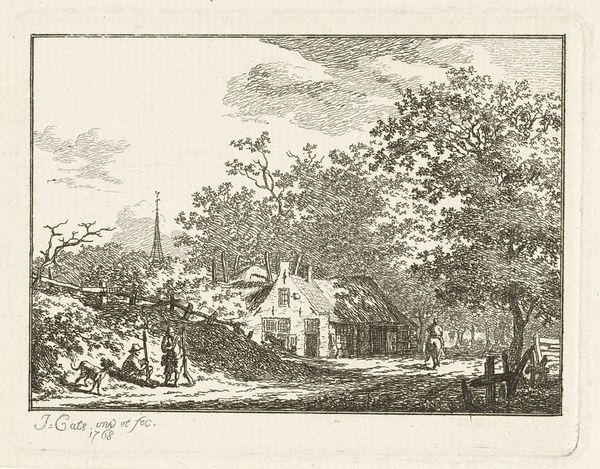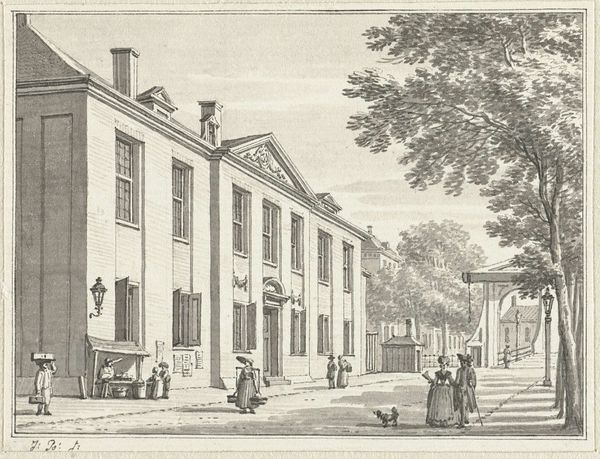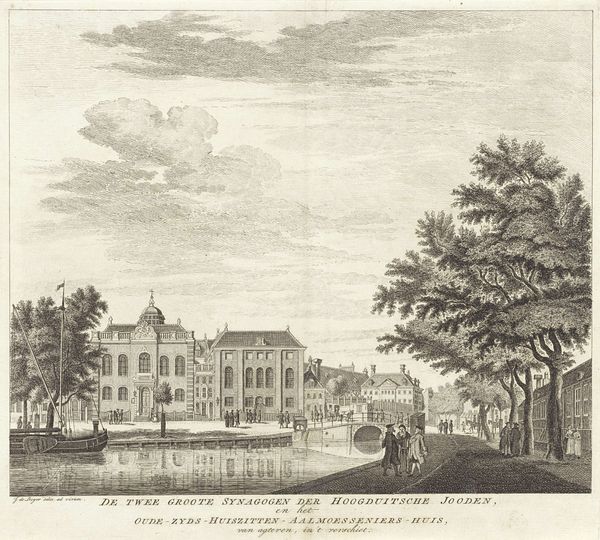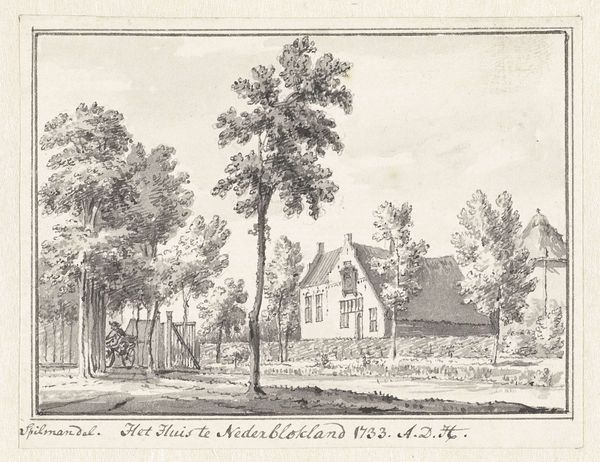
drawing, etching, ink
#
drawing
#
neoclacissism
#
etching
#
landscape
#
etching
#
ink
#
cityscape
Dimensions: height 375 mm, width 217 mm
Copyright: Rijks Museum: Open Domain
Editor: This ink and etching drawing, "Church and Part of the Ruins of the Abbey at Rijnsburg" by Hendrik Tavenier, was created in 1784. There's something very serene, yet slightly melancholy, about the contrast between the sturdy church and the crumbling ruins. What symbols or ideas jump out at you? Curator: The ruin is certainly the key to unlocking its deeper significance. It’s placed within what appears to be a carefully ordered Neoclassical composition. Consider ruins: throughout the ages, they signify more than mere decay; they represent a meditation on time, a dialogue between past glory and present reality. Here, it triggers memory, reminding us that even the grandest structures are subject to transience. The church stands defiant, yes, but is it a monument to spiritual endurance or an emblem of institutional power? What feelings are stirred when the figures seem dwarfed by these structures? Editor: That tension you pointed out is very compelling. It feels like a visual argument about power and resilience. I hadn't considered that the figures in the scene also communicate this argument. Curator: Exactly. Consider how artists like Tavenier carefully position architectural elements and figures within their work. They serve as conscious arrangements, encoding cultural anxieties about stability and change. Notice too the trees - not a perfectly ordered Italianate garden, but one integrated within a somewhat wilder nature, implying time, neglect, endurance. How does this balance of decay, institutional presence and encroaching nature shape your interpretation now? Editor: It’s like Tavenier is suggesting a constant push and pull between these forces, a cycle of building and decline. It's less about a single definitive statement and more about perpetual change. Thank you, that perspective has helped me unlock this work. Curator: Precisely. And remember that each symbol offers not just one answer, but a multitude of narratives for us to unravel. These narratives resonate even now, as we continue to grapple with the complexities of time, memory, and cultural legacy.
Comments
No comments
Be the first to comment and join the conversation on the ultimate creative platform.

